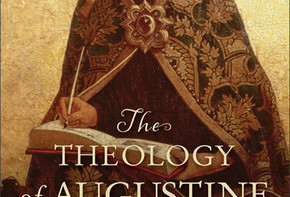A Review of Férdia J. Stone-Davis, Musical Beauty: Negotiating the Boundary between Subject and Object (Eugene, OR: Cascade Books, 2011)
Beauty, understood by means of wonder, gains a transformative power.[1]
In her recent book, Musical Beauty, Férdia Stone-Davis undertakes an ambitious exegetical task, offering a reading of the aesthetic thought found in Anicius Manlius Severinus Boethius (c.480-c.525) and Immanuel Kant (1724-1804), and based on these readings she offers her own conclusions concerning the epistemic and ontological significance of musical beauty. Her conclusion, in short, is that the particularities of music’s physicality allow us to grasp pre-reflective relations between subject and object.
 Throughout her effort to grasp the primary shape of Boethius and Kant’s aesthetic thought, Stone-Davis gives detailed descriptions of the nuances inherent in the music theory of each, as well as inform readers of the musical shifts that substantially differentiate the music each thinker would have known (e.g. the movement from Pythagorean tuning and the sequential tone-patterns of chant to the development of equal temperament tuning and sixteenth century polyphony). Demonstrating a fluidity to work within and without the original contexts of both thinkers, she finds continuity in their focus on musical practice to open up for dialogue between them.
Throughout her effort to grasp the primary shape of Boethius and Kant’s aesthetic thought, Stone-Davis gives detailed descriptions of the nuances inherent in the music theory of each, as well as inform readers of the musical shifts that substantially differentiate the music each thinker would have known (e.g. the movement from Pythagorean tuning and the sequential tone-patterns of chant to the development of equal temperament tuning and sixteenth century polyphony). Demonstrating a fluidity to work within and without the original contexts of both thinkers, she finds continuity in their focus on musical practice to open up for dialogue between them.
Within Boethius’ theological vision, listening of music is an epistemological endeavor in line with the Delphic injunction to “know thyself”. Boethius finds the ordering of the physical universe to be grounded in God, identifying a ‘Cosmic’ music (musica mundane) to spin from the harmonic balance of its divinely-instantiated celestial movements. While this “music of the spheres” is silent to human ears, ‘Human’ music (musica humana, that which derives from human use of sense, reason, and body) and ‘Instrumental’ music (musica instrumentalis, that harmony which comes from human use of instrument) are related to this Cosmic music insofar as they harmonize with its divine movements.
This is further dramatized in The Consolation of Philosophy because, for Boethius, the material and intellectual forms of music find relation through the neo-platonic “Chain of Being” in which they participate, and Boethius’ physical experience of music pulls him from the material world towards music’s intellectual forms, and ultimately orients him towards the unchangeable harmony of divine form – a Christianized Diotima’s ladder, of sorts. The experience of physical music enables him to understand himself as part of the divinely ordered world. Thus the Delphic call to self-knowledge is realized and Boethius is encouraged to harmonize his soul with the Divine.
Consequently, Stone-Davis finds that both beauty and music hold ontological and theological significance for Boethius in the way they share in the composition of the material and intellectual world, as well as how one is to know them. However, she sees the significance of music’s physicality to be merely instrumental for Boethius, as its telos (end) is a purely intellectual self-knowledge of one’s relationship to Divine form. And thus she concludes that the physical experience of music (and consequently, beauty) is not valued sufficiently, as the material is only valuable insofar as it harmonizes with the reason that bridges separation from God.
Moving on to the work of Kant, Stone-Davis finds that while he allows both pure aesthetic cognition and beauty a capacity to orient oneself to the world, contra Boethius he prohibits music completely from this role. For Kant, beauty’s ‘content’ is not a physical thing which is interacted with in the act of aesthetic judgment (wherein aesthetic ideas provide “the supersensible substrate of appearances” from which aesthetic pleasure stems). Rather, beauty’s content is “the harmony of the free play” of the cognitive powers. Beauty is that which brings clarity to the cognitive powers in aesthetic perception, not a thing mediated through physical means. And thus the subject (the one having the aesthetic experience) and object (the physical thing that the subject considers ‘beautiful’) are separated, the subject’s intellectual movement of concepts taking priority over the notion of sensing the physical object. Consequently, Stone-Davis identifies the Kantian “dependent and conditional” beauty to stand in conflict with the “necessary and universal” beauty of Boethius.[1]
Thus, when Kant locates beauty in the fine arts, it pertains to the act of free play engendered by the sensory input the audiences receive from them. As he holds that, “…[O]nly the full co-operation of thought, intuition, and sensation in word, gesture, and tone, ensures successful communication,” and that music is meaningless on its own because it is concept-less. The primacy of reason in Kantian thought ends up, “…precluding the beauty of music, except in a formal way.” A problem Stone-Davis finds exacerbated by Kant’s ignorance of the phenomenon of music.[2]
After a thorough unraveling of what she finds to be at the heart of his musical ignorance, Stone-Davis summarizes the crux of Kant’s error, “[H]e has an overly rational understanding [of the aesthetic response and beauty]…and, consequently, is unable to validate music as sound.”[3] She follows this accusation by a detailed interaction with the contemporary voices of Peter Kivy, Jeanette Bicknell, Carl Dahlhaus, and Philip Bowman in their attempts to reconfigure both the conceptual and formal aspects of Kantian aesthetics. Rather than discover the Kantian project redeemed, she continues to find, “a reluctance to submerge oneself in the structure in and through which music [as well as beauty] lays hold of us and imparts its manifold of meaning.”[4] Having laid out the workings of music and beauty in Boethius and Kant, Stone-Davis’ thesis distinguishes itself.
With a realization that music is indeterminate and unable to hold a single meaning, she does not see it as needing to transcend physicality or to entail subjectivity. For Stone-Davis, music invokes an “enchanted mode of attention” because it’s meaning is located in the mutuality of subject and object wherein, “…the subject is incorporated and sustained physically within and through the music.” Ergo, the subject resonates with the music instead of mastering it. Beauty and wonder serve to indicate the enchantment that arises when subject-object distinctions are postponed.[5]
Noting Jeremy Begbie’s warnings against a “theological aestheticism” that allows music to “become a ‘new theological master’ giving us ‘supreme access to God,” Stone-Davis explains that she does not see discussion of music’s physicality to absolutize a channel to the Divine, “…for this is beyond the scope of the physical which can only point towards an immanent transcendence.” [6]
In the event of experiencing music, the subject is transformed by the way it interprets and responds to what it receives. It is the vast number of potential interpretations and responses that communicates an abundance of meaning in the musical experience (and because this experience is an embodied one, these meanings stretch far beyond the conceptual). Consequently, in music’s ability to relate the human subject to the object, one finds an understanding of beauty, “within the wonder-full akstatic stance elicited by music the veil between subject and object is at its most transparent.[7]
Stone-Davis’ work is widely-researched, well-written, and intriguing in its engagement with two of the most influential figures in western aesthetic thought. As the primary and secondary sources she interacts with are not intended for the non-academic audience, the arguments may be difficult for some to follow. However, if one desires to think seriously through Western understandings of music, the effort is well worth the making.
While it is refreshing to see in Stone-Davis’ theological aesthetic a value to keep the physical from pointing beyond an immanent transcendence, one is left wondering about the theological implications of her notion of pre-reflective subject-object relations. If these implications are not intended to make apophatic (negative) or kataphatic (positive) claims about God, a more explicit emphasis and clarification on why this is so would be helpful. But despite these questions, this book was overall a fascinating read.
[1] Ibid., 143-144. Kant does believe that his subjective account of beauty entails an experience that is universal insofar as all subjects experience beauty in a similar way.
[2] Ibid., 144. Albeit after some debate within Kant’s own thought. Also, Stone-Davis does mention that music’s beauty finds a new legitimacy in the third Critique for its formal aspects, though she finds Kant’s tendency to look at music through its sensory aspects to maintain precedence. Ibid., 145-147.
[3] Ibid., 149.
[4] Ibid., 156-157.
[5] Ibid., 159, 192.





